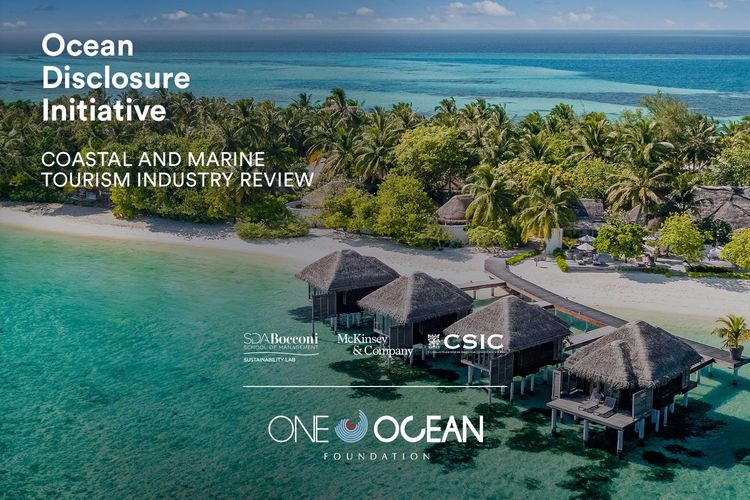
With the world accelerating its move toward cleaner and more reliable energy sources, attention is increasingly turning to the vast and largely untapped power of the ocean. Ocean energy is quickly emerging as a dynamic and promising pillar of the Blue Economy, with growing interest from governments, investors, and industries worldwide.
This publication launches our new series of reports on Blue Business Opportunities—initiatives and business models that generate economic value while supporting the health and resilience of marine ecosystems. Developed as part of the Ocean Impact Initiative, the report explores the potential of ocean energy sources, outlines key environmental considerations, and suggests pathways to strengthen the sector’s responsible growth.
Ocean energy technologies and their benefits
From the ocean, various renewable energy sources can be harnessed, each generated by different natural processes and able to produce low-carbon electricity:
Tidal energy, generated by the gravitational pull of the moon and the sun.
Wave energy, produced by wind-driven ocean surface waves.
Ocean Thermal Energy Conversion (OTEC), which uses the temperature contrast between warm surface water and cold deep water.
Salinity gradient energy, created where freshwater mixes with seawater due to differences in salinity
The advantages of ocean energy are compelling: it offers predictable and reliable power generation, produces low-carbon electricity with minimal land use, and can enhance energy independence for coastal and island communities. It also has the potential to be paired with desalination systems and to stimulate job creation and economic growth.
Potential environmental impacts
Although less intrusive than land-based technologies, ocean-energy systems may affect marine life, sediment dynamics, and underwater sound levels. Main pressures on the marine environment include:
Habitat alteration – Installation of devices and cables can disturb seabed habitats.
Collisions with marine fauna – Moving components may present collision or entanglement risks for marine organisms
Underwater noise – Construction and operation can disrupt the behaviour and communication of marine species.
Changes in water dynamics – Devices may modify local currents, sediment movement, or water temperature.
Pollution risks – Leakage of fluids or use of antifouling coatings may introduce contaminants.
Strengthening the responsible development of ocean energy
Advancing ocean energy must go hand-in-hand with ensuring its environmental integrity, community acceptance, and long-term sustainability. Some ways to ensure the responsible development of ocean energy include:
• Promote hybrid systems that share infrastructure with offshore wind, desalination, and cooling facilities to optimise space and reduce costs.
• Apply robust marine spatial planning supported by high-quality ocean mapping to guide responsible and efficient site selection.
• Foster stronger collaboration between scientists, industry, and policymakers to ensure coordinated growth.
This review highlights One Ocean Foundation’s commitment to advancing the sustainable growth of the ocean energy sector while ensuring the protection of marine ecosystems.


